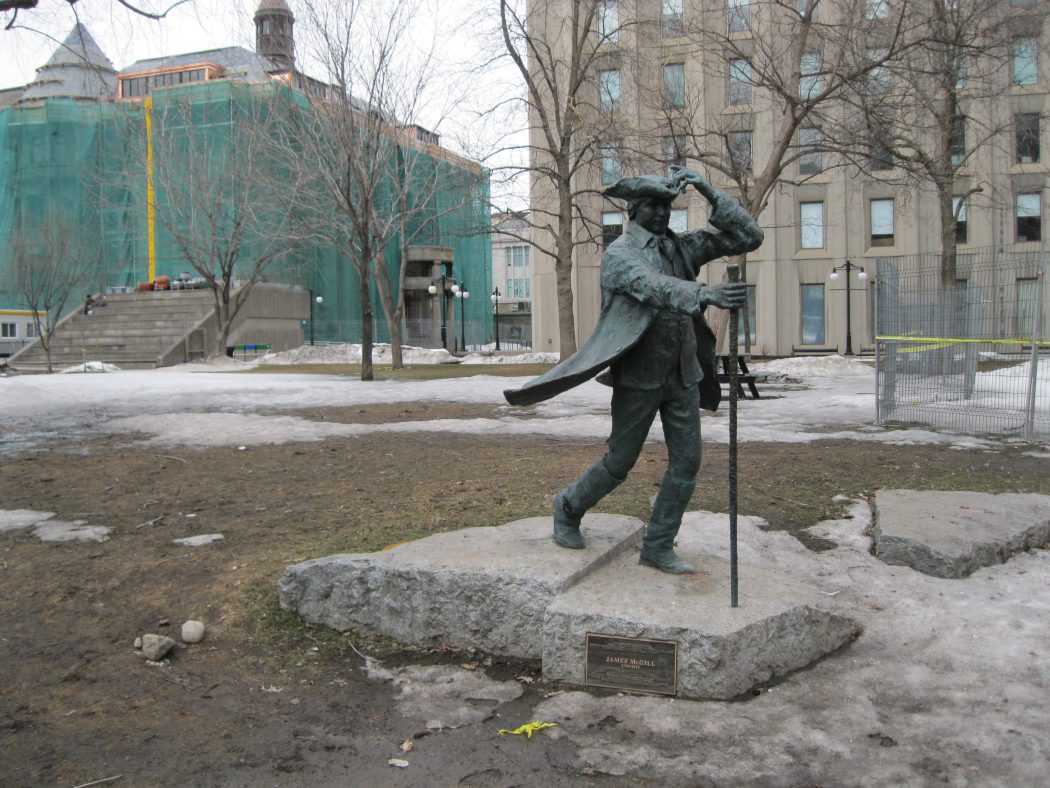In 1883, Canada’s first Prime Minister, Sir John A. MacDonald, mandated the removal of First Nations children from their “savage” parents and communities so that they might be assimilated into white society. This mandate led to the creation and propagation of residential schools in Canada, effectively instituting a genocide of Indigenous peoples, their cultures, languages, and ways of life.
We often look back at these events as hallmarks of colonial antiquity and fail to recognize their modern implications and effects. Two weeks ago, in anticipation of a demonstration against racism in the heart of Montreal, a downtown statue of MacDonald was spray-painted red. The group responsible cited an expression of anti-colonial and anti-racist solidarity as an explanation for their actions. Vandalism was the means to an eventual end as they seek the permanent removal of the statue and hope for it to become a tool for education rather than one of blind celebration on the street.
We often look back at these events as hallmarks of colonial antiquity and fail to recognize their modern implications and effects.
The demonstration against racism was prompted by the election of Francois Legault and his party, the Coalition Avenir Québec (CAQ) to Quebec’s National Assembly. The CAQ has expressed a desire to drastically cut immigration and expel new arrivals who don’t pass a French language and values test. Their provincial campaign was based on the preservation of a distinct Quebecois identity that appealed to the racial and cultural biases of many white residents of the province. However, many people fear that the election of the CAQ hearkens back to the racist rhetoric promoted by MacDonald and the Canadian government all those years ago in its favouring of white culture over the diverse and integrated reality of a multicultural Quebec.
The defacing of colonial statues around Montreal may seem irrelevant to the McGill community, but such acts have powerful implications for our campus. A statue of James McGill stands just beyond the Roddick Gates, and, like monuments to John A. MacDonald and Queen Victoria, represents more than just the physical likeness of his person. According to the plaque in front of his statue, James McGill was a “fur trader, merchant, magistrate, colonel of the militia, defender of Montreal, member of the legislative assembly, executive councillor of Lower Canada, citizen of Montreal, and founder of McGill University.” This plaque conveniently excludes the very public information that James McGill was a slave owner, a slave trader, and a perpetrator of institutional racism against people of colour in Canada.
The Students’ Society of McGill University issued a statement through their External Affairs portfolio after the recent Quebec election that very clearly placed them–and, through their mandate of representation, the whole of the McGill student body–in solidarity with the anti-colonial, anti-imperial, and anti-racist sentiments of the activists that vandalised the statue of Sir John A MacDonald. What, then, does this imply for the fate of the statue of James McGill?
To say that the statue of James McGill has no place on campus is not equivalent to calling for its disappearance; to ask for the removal of colonial artifacts from the public sphere isn’t the same as asking to erase history.
It is obvious that statues like that of James McGill are important no matter what side of the debate one stands on. They hold cultural and historical significance, both positive and negative, that ought to be acknowledged. To say that the statue of James McGill has no place on campus is not equivalent to calling for its disappearance; to ask for the removal of colonial artifacts from the public sphere isn’t the same as asking to erase history. The statues must continue to exist, lest the wrongdoing of James McGill and the like be forgotten. They do not belong on pedestals in our parks, campuses, and streets, but rather in museums with explanations and effective means of education on parts of history often conveniently left out.








